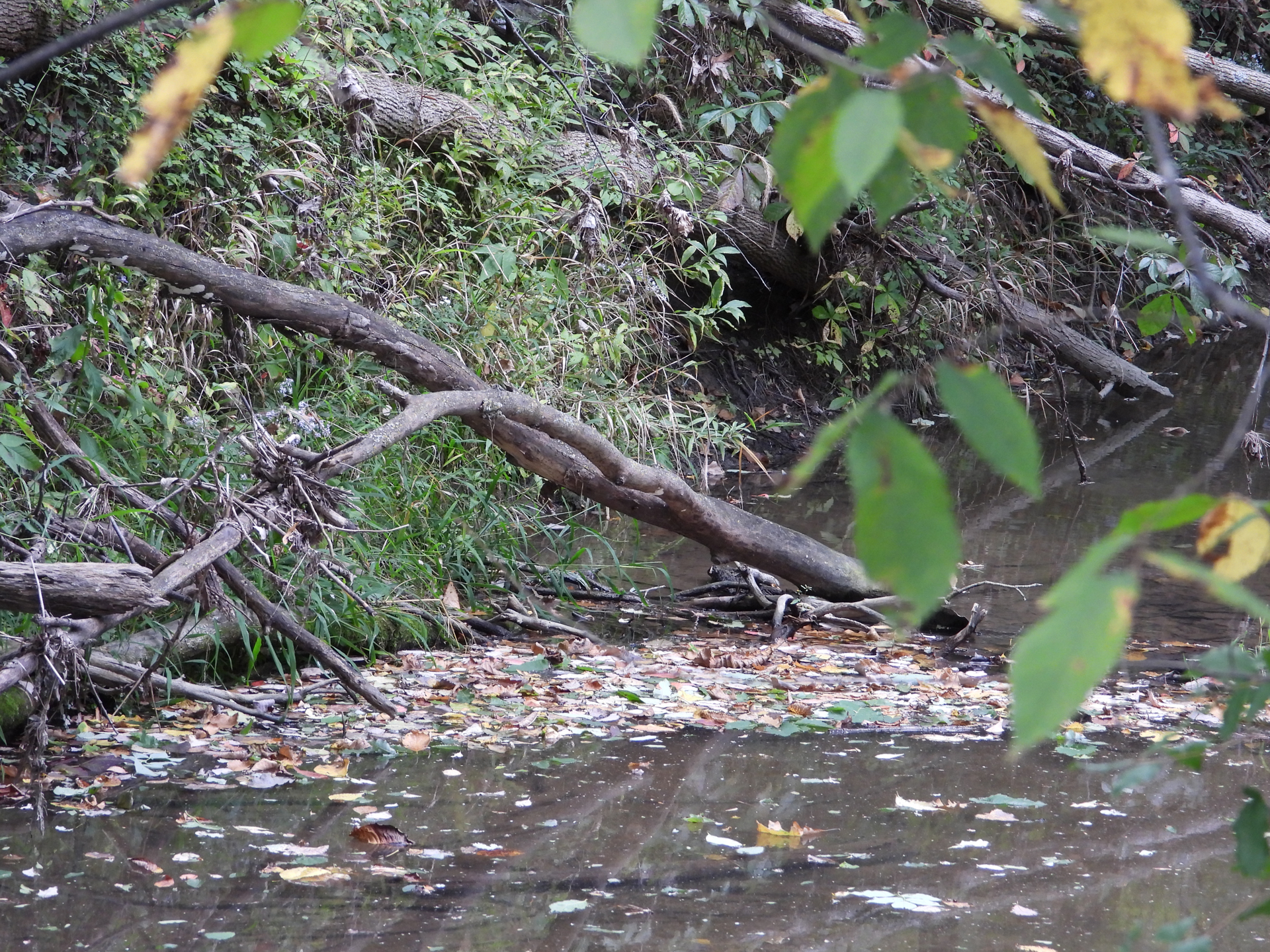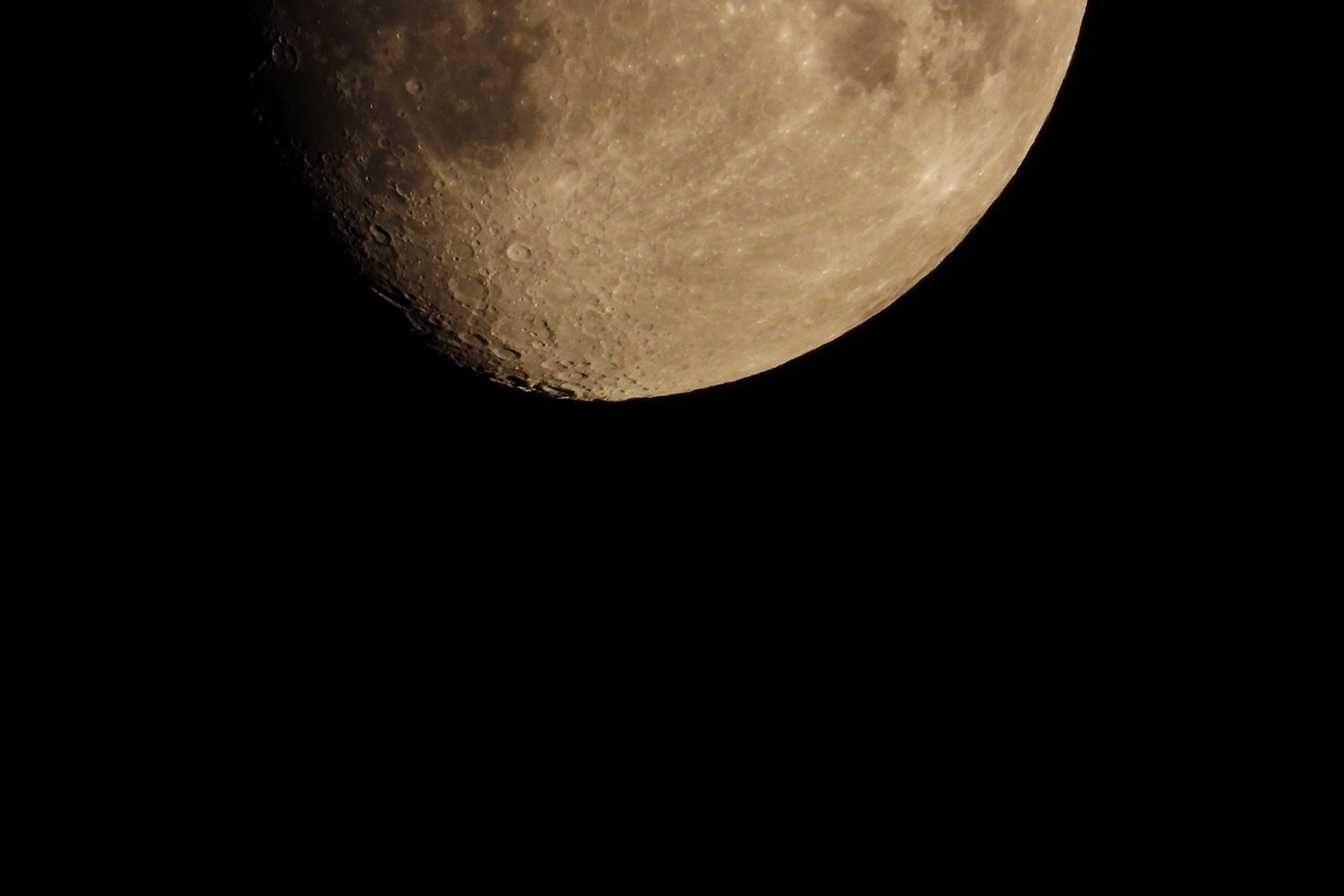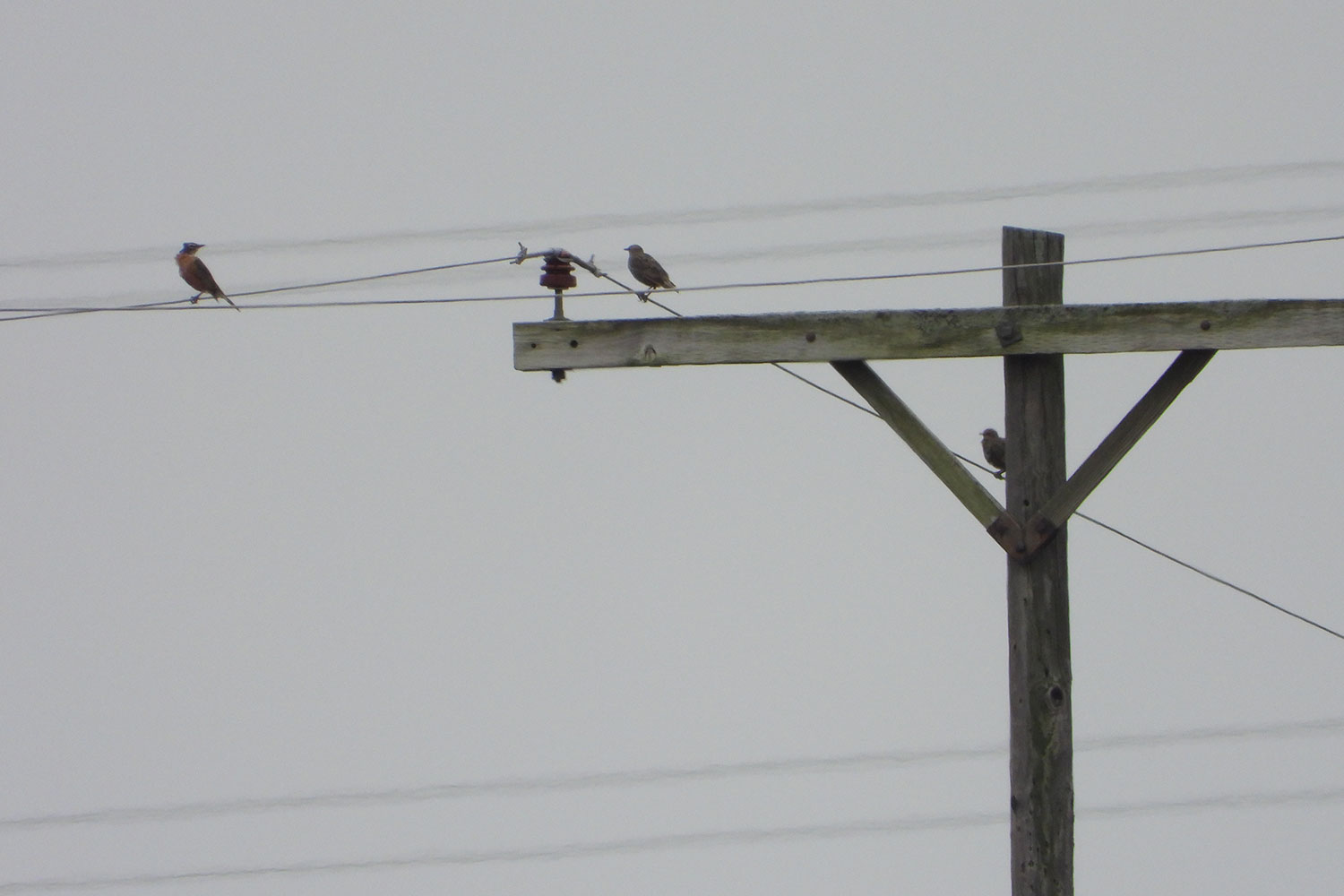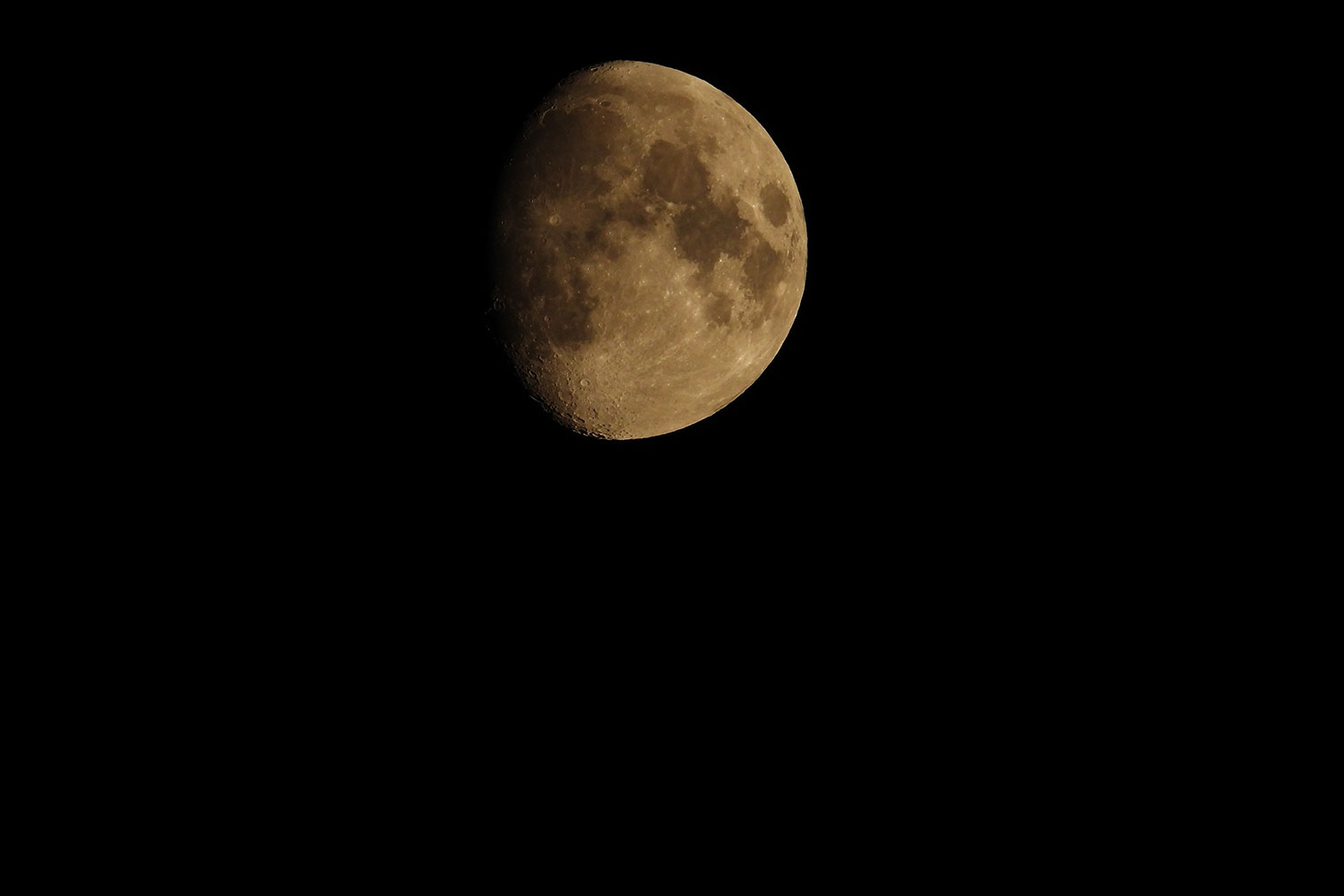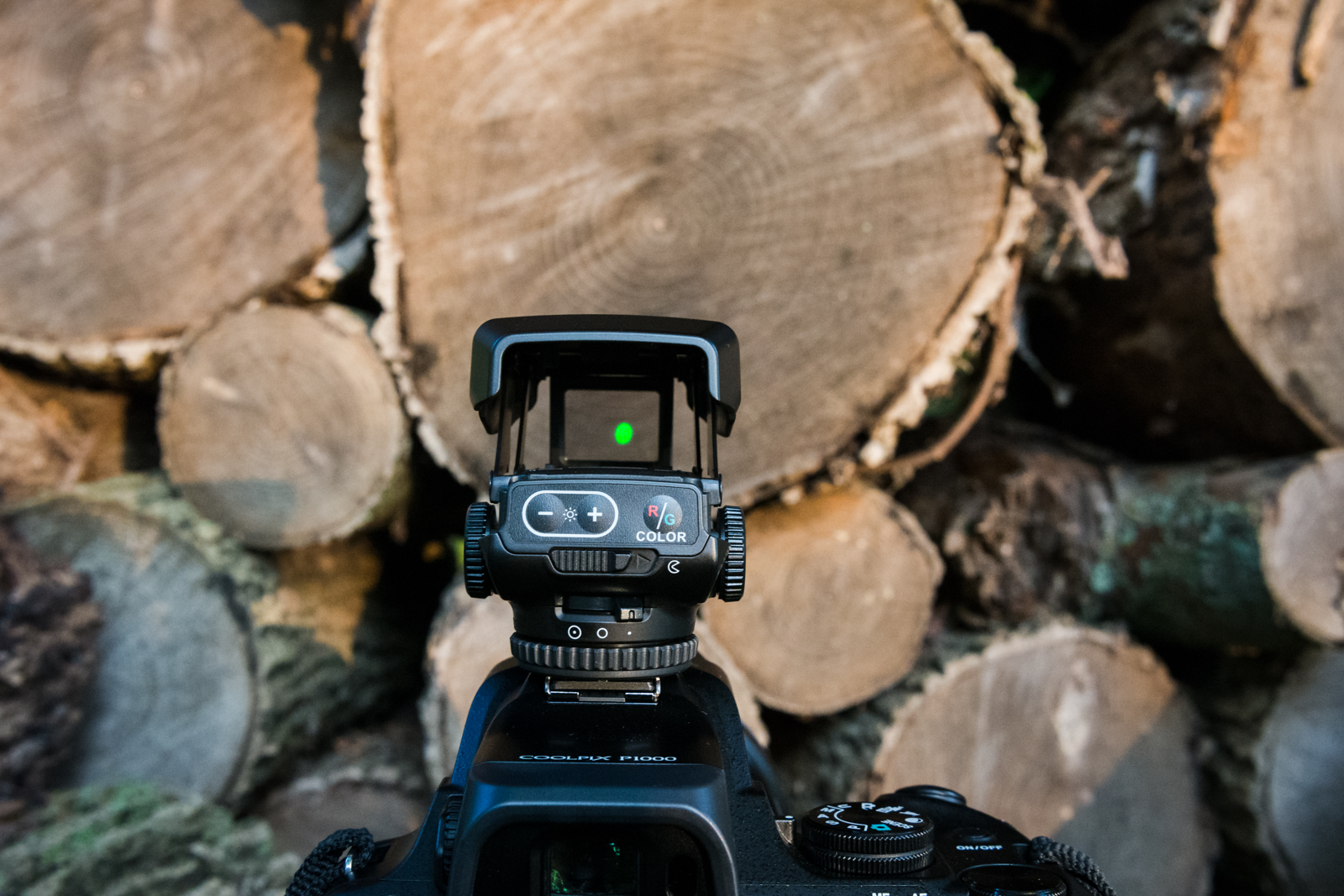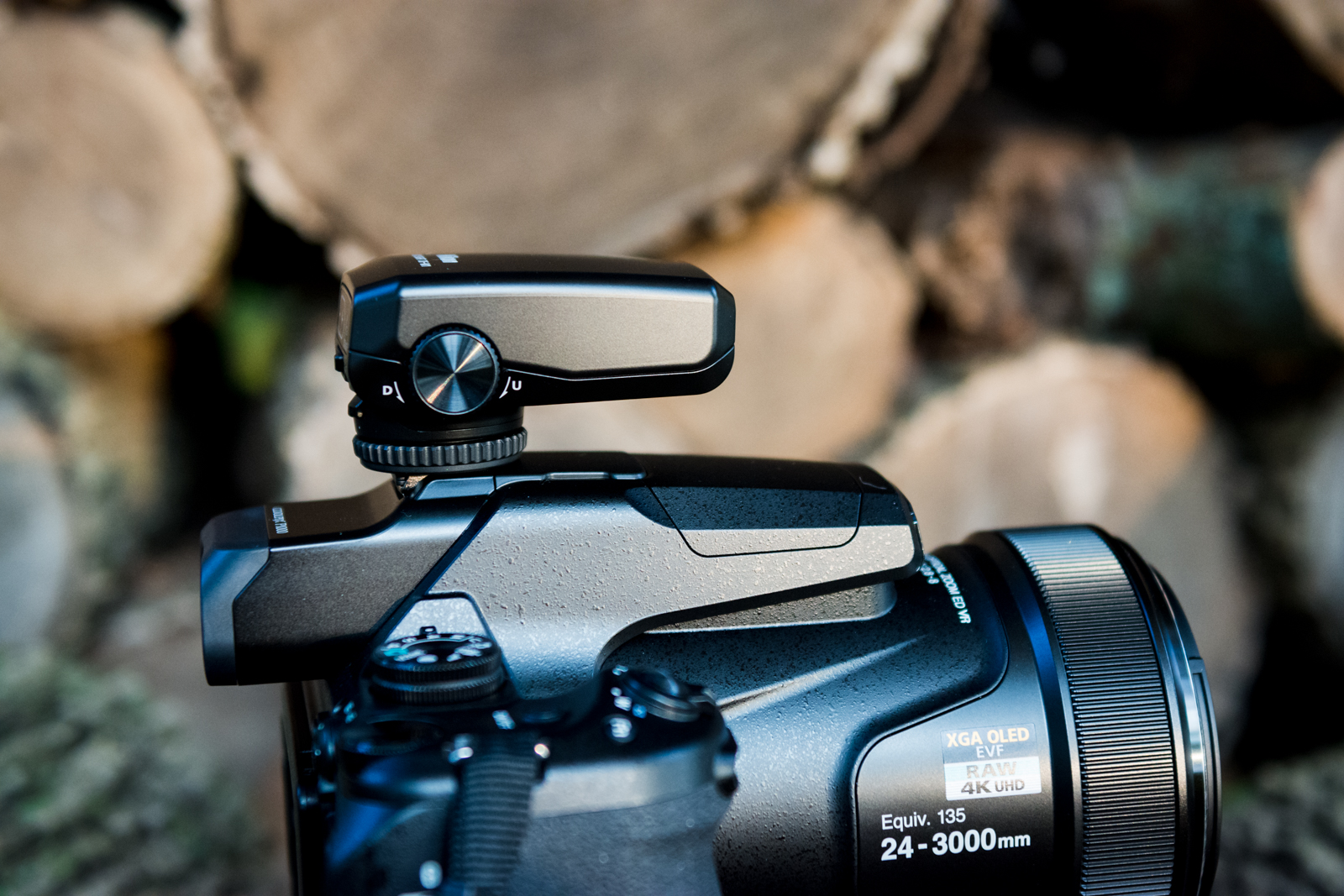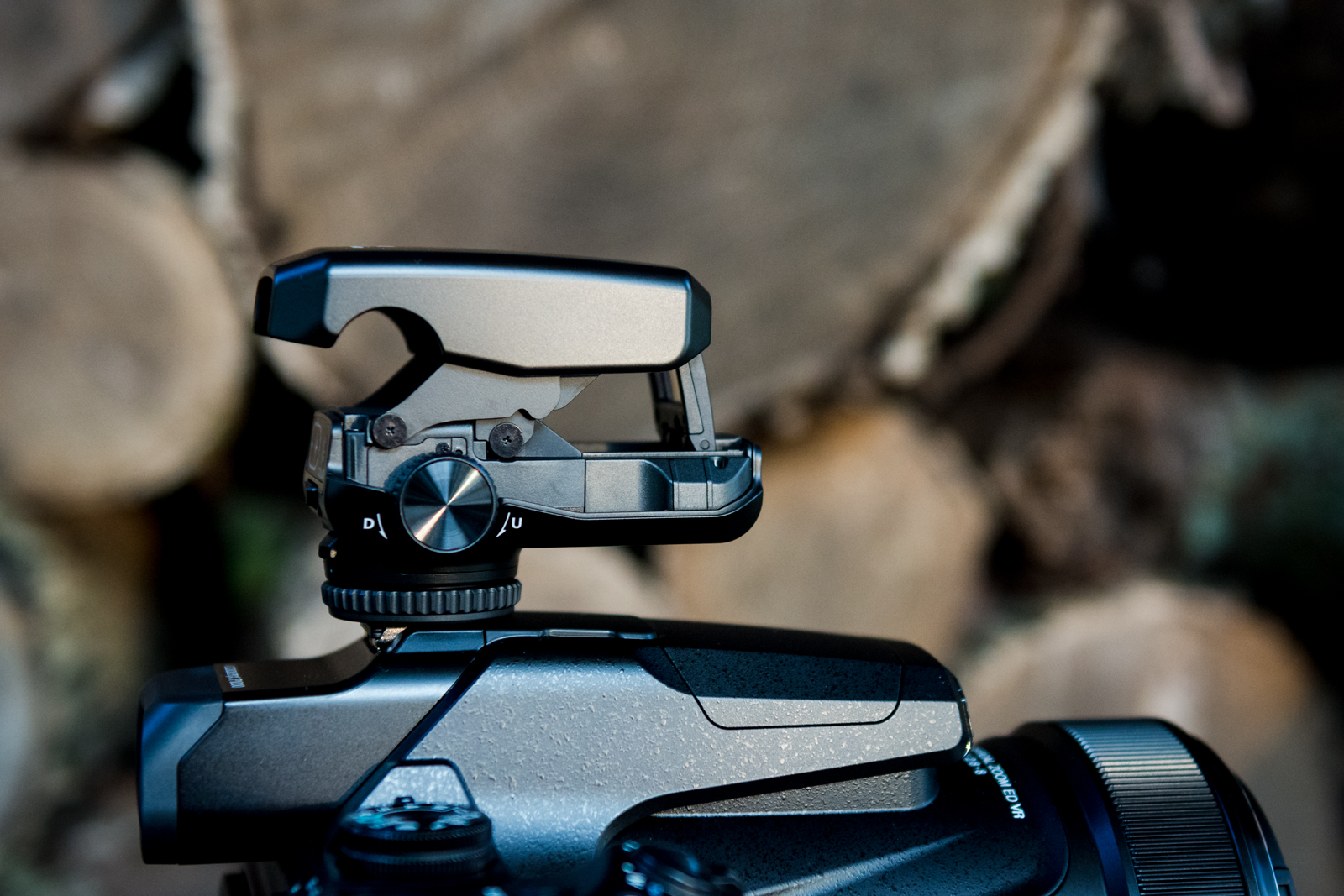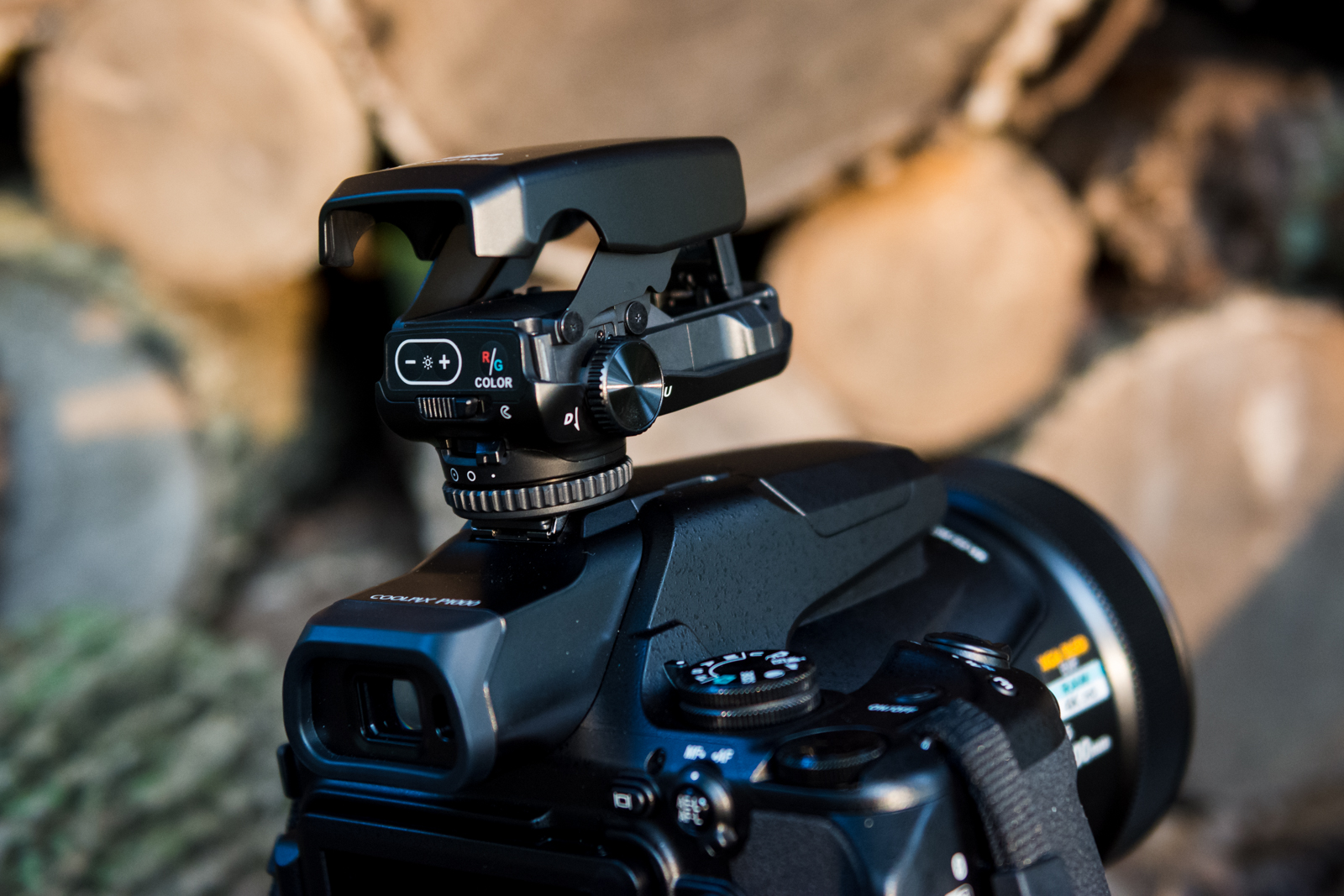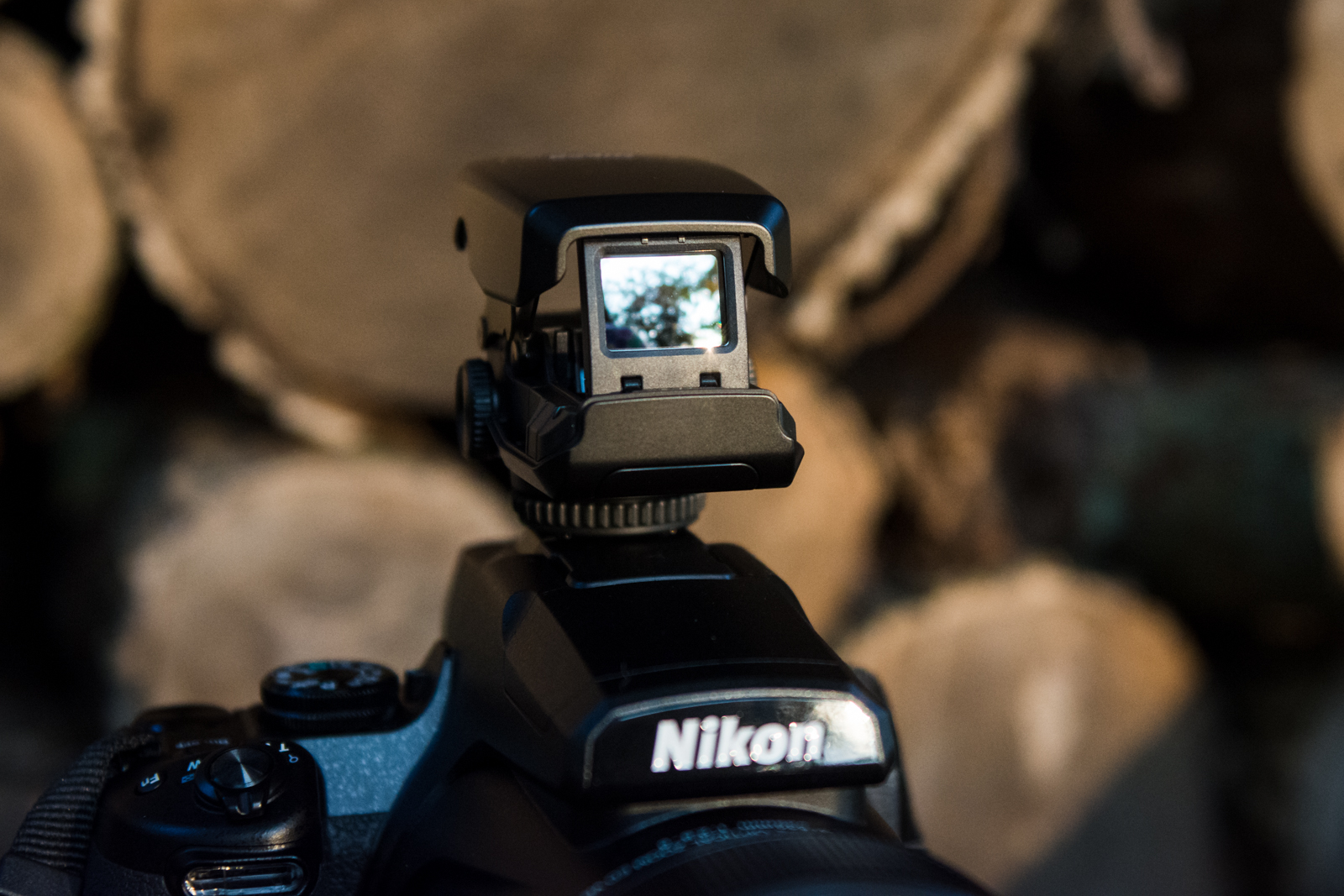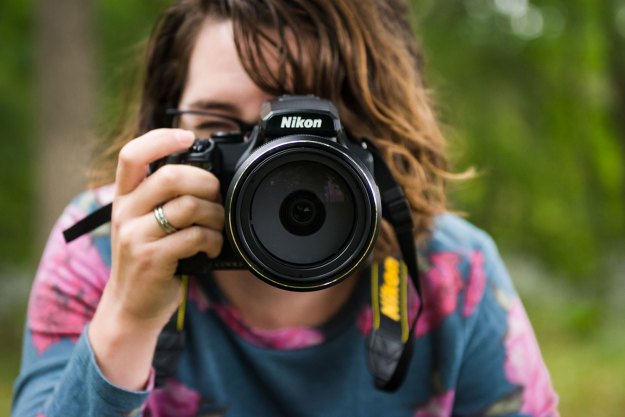
“The P1000 may not be the best camera for $1,000 -- but it is the best zoom we’ve seen yet.”
- Crazy telescopic zoom
- Excellent optical stabilization
- Solid image quality in good light
- On-lens zoom controls
- Decent build quality
- Large and front-heavy
- Controls inaccessible while processing images
- Autofocus, image quality suffer in low light
A superzoom camera gives you the reach you just can’t get with your phone — or even a DSLR. More telescope than camera, the Nikon Coolpix P1000 takes this concept to the extreme, with a best-in-class, 125x optical zoom that lets you survey the craters of the moon. It also more than doubles the 50 to 60x zooms of competing cameras on the market.
That extreme lens, however, is paired with the typical point-and-shoot internals like a 16-megapixel, 1/2.3-inch sensor. So while the lens may be out of this world, image quality isn’t. On the plus side, the P1000 does shoot 4K video at 30 frames per second, and Nikon balances that large lens with a powerful optical stabilization system. All told, the camera weighs more than three pounds, but weight may not be the only drawback of putting such a big lens on a compact camera. At the extreme telephoto end, is it even possible to shoot handheld and get sharp results?
This review was originally published on October 3, 2018. It was updated on October 9, 2018 to include details on the Nikon DF-M1 dot-sight accessory and new sample images.
Superzoom means super-sized
Like most bridge-style, big-zoom cameras, the Nikon P1000 feels like a point-and-shoot trapped in a DSLR’s body. But other superzooms don’t have a 125x optical zoom — the P1000 is more like a camcorder fused to a DSLR. The grip and body feels very much like the latter, but the long lens barrel means the camera is 7 inches long — and that’s when turned off.
The optics are so large, in fact, that you can feel the weight of the camera shift in your hands as you zoom in, and it’s quite front heavy with the lens fully extended. Once, it actually tipped our tripod forward. If you’re working with a lighter weight tripod, make sure one leg is directly underneath the lens to accommodate for the heaviest part of the camera being so far from the tripod’s center.
The Nikon P1000’s dial even includes a bird and moon mode, two scenes that the long lens obviously caters to.
While superzooms are often thought of as perfect travel companions, the 3-plus-pound weight of the P1000 is enough to make all-day hikers second-guess their decision to bring it along. Part of that weight is also thanks to durable construction, although it doesn’t feel quite as high-end as a weather-sealed camera. Sure, it’s still lighter than hauling a DSLR and a few big lenses around, but it’s not the automatic go-to choice for adventure photographers.
That said, the P1000 packs in a 3,000mm lens and it’s worth pausing a moment to take in how truly impressive that is. Nikon’s 600mm DSLR lens weighs 8.4 pounds and is more than 17 inches long — and costs over $12,000 — so if there even was such a thing as a 3,000mm lens for a DSLR, you probably wouldn’t be taking it anywhere. The P1000, then, is big compared to other bridge-style zooms, but quite compact given the expansive zoom. For wildlife photographers, it could be an excellent addition to their kits, although for reasons we’ll get into, it probably couldn’t be their primary camera.
More than one way to zoom
That long lens is best supported with a second hand, which is easy to do thanks to lens controls right on the barrel. Next to the primary zoom lever is the snap-back button, which briefly zooms out to help you locate your subject. A control ring encircles the front of the lens barrel and can be set to control different options, like manual focus or exposure compensation.
If the on-lens controls aren’t your thing, at the top of the camera you’ll find another zoom toggle switch wrapped around the shutter release button, the typical setup of long-zoom bridge cameras. Also on top, the mode dial includes a bird and moon mode, two scene modes that the long lens obviously caters to.
The back of the camera is dominated by a 3.2-inch, 921,000-dot LCD screen that flips out to the side and rotates a full 180 degrees, meaning, yes, you can see yourself when you take a selfie — although, you certainly won’t be doing this at the telephoto end of that 125x zoom.
In addition to the screen, the built-in electronic viewfinder makes it easy to frame your shots in bright light, and it sticks out a good distance away from the camera body which makes it more comfortable to use — it’s even not terrible for glasses wearers.
Another set of buttons sits to the right of the LCD — and if you brace the lens with your left hand, they’re all easily accessible while your right hand is still wrapped around the grip. Overall, the design of the P1000 is a comfortable mix between DSLR and point-and-shoot — most of the functions we needed to access had a physical shortcut, which is great when you need to make adjustments quickly in the field.
We did have to dig inside the menu for stabilization and autofocus settings, but otherwise there’s a good amount of direct access control. The camera also includes both a pop-up flash and a hot shoe for using external flashes.
User interface and connectivity
What’s not accessible from the physical controls lives inside the menu, which is simple and straightforward but does feel a bit clunky compared to Nikon’s DSLR menus. The P1000 menu is divided into four sections — Photo, Video, Connectivity, and Tools. The Photo submenu changes depending on exposure mode, with the most options presented in manual and more limited choices in automatic or the various scene modes. The Video menu houses such settings as framerate and wind noise reduction. Settings for the optical stabilization and autofocus modes are tucked into the Tools menu, which feels a bit nonsensical.

While we normally have trouble with Nikon’s smartphone connectivity, connecting the P1000 to an iPhone was thankfully very simple. The connectivity no longer requires switching back and forth from the app to the iPhone’s settings. (This could be an iOS improvement, since the a pop-up will now ask permission to connect to the network.) The camera menu walks you through the steps, which didn’t require a password, just a physical confirmation by hitting the “OK” button on the camera instead.
You can connect to the camera via Bluetooth but the app will automatically switch to Wi-Fi for transferring photos. Wi-Fi is also required for remote control. The app can even control the zoom remotely, but, oddly, you can’t adjust exposure settings — even in manual mode. This may be a glitch, as it looks like it’s possible, it simply didn’t work. Bluetooth can also be set up to automatically back up images to Nikon Image Space, though those images are saved at just 2 megapixels.
3,000mm lens: Crazy fun, or just crazy?
When it comes to user experience, there’s one thing the P1000 has in spades: fun. You can get closer than you can with any other camera on the market, and at the very least, that makes for an entertaining party trick.
While fun and impressive to use, the zoom is also a bit unwieldy and we’d recommend a tripod when shooting at its more extreme reaches. Shooting handheld at 3,000mm isn’t impossible, however, just difficult. Good light is a must, as a fast shutter speed is required to prevent blur. Using the electronic viewfinder adds more support by holding the camera up to your face and bracing with your elbows — we couldn’t get a sharp shot “monkeying” the camera with it held at arm’s reach, using the LCD screen only. Combining the camera’s optical image stabilization system and very careful grip, we were able to get sharp handheld shots even at 3,000mm — in good light, that is.
The “hit rate” shooting at full zoom isn’t as high as shooting at half zoom, so you may get better results by backing off slightly. But, much to our surprise, it is possible to shoot handheld at 3,000mm if you have a little patience. With stabilization turned off, we couldn’t get a single sharp shot — so leave it on unless you’ve got a good tripod. The images below show the difference between stabilization being on and off; it makes quite an impact.
Getting the single point autofocus exactly where you want it is also tough at the long end of that zoom. There’s a lot of hand shake at 3000mm, and the optical stabilization doesn’t steady the live view, so you have to be careful that you’re actually focusing where you mean to.
In lower light, a tripod is always necessary. Even with one, getting perfect results is still a challenge, however. It’s tough to position the tripod in the exact right spot. The camera is very front heavy and the slightest movement makes a huge difference in what that big zoom is actually capturing. If your tripod head “breathes” even by a hair after you lock in the perfect angle, your framing changes dramatically.
While the performance is on par with other superzooms, we expected more for $1,000.
Autofocus performance was on par for what we expected from a fixed lens camera: good in most situations, but can struggle in low light. The P1000’s large lens also makes it easy to get too close for the camera to focus — the camera’s macro mode is good for shooting as close as 0.4 inches at the wide end of the lens, but that gets pushed back to 23 feet at full zoom.
Manual focus is a must for photographing the moon, but fortunately the P1000 includes focus peaking which makes the task much less of a guessing game.
The Nikon P1000 has a decent 7-fps burst speed. The buffer will fill up after just a second, but the camera can shoot again a few seconds later, even when shooting with RAW. Too many bursts in a row, however, and the P1000 will shoot single shots at around three seconds apart as the buffer tries to clear. Making this more frustrating, you can’t adjust any settings until the buffer clears. That means you can’t operate the zoom, change exposure settings, or anything else — sometimes for several seconds.

The Nikon P1000’s battery is rated for 250 shots, which is on the low end, but not inconsistent with the superzoom category. As always, battery life depends on how you shoot; using stabilization, the EVF, and the built-in flash will all drain it faster. We managed to fit in an hour-long hike, two separate moon shoots, and a few other short sessions before the low battery warning came on.
While the performance is on par with other superzooms, I was hoping for a bit more simply because of that price tag. Nikon dedicated most of its resources towards that huge lens, and while that’s understandable, it falls behind other ~$1,000 cameras in other areas. Still, we managed to capture most of the shots we were aiming for, but you’ll need to exercise patience between shots — and that might be a deal breaker for some disciplines, like bird and wildlife photography, where the P1000 would otherwise be expected to excel.
Laser aim with the Nikon DF-M1 dot sight
Determining exactly where in the scene you are with that 125x zoom is tough to do. To help (without using that snapback button), Nikon launched the Nikon DF-M1, a dot sight accessory. With a 3000mm lens, the P1000 can really benefit from the assistance the DF-M1 provides. (The DF-M1 will work with other Nikon cameras, but Nikon designed it for the P1000.)
The DF-M1 sits in the hot shoe slot, which means you can’t also use an external flash simultaneously. The accessory uses a cold shoe mount, so there’s actually no connection to the camera itself and it also doesn’t drain the camera’s battery. TheDF-M1 pops up and pops back down — much like a pop-up flash — for compact storage.
The DF-M1 is like a second viewfinder for the P1000, only this viewfinder has a dot telling you exactly where the camera is pointed in the scene. So, when you’re just seeing blue sky with the viewfinder, you can use the laser sight to find that bird you’re trying to photograph, for example. The DF-M1 is very helpful in that regard, making it easy to quickly determine where the lens is pointed.
Although Nikon made DF-M1 specifically for the P1000, you still have to first calibrate the dot sight to the P1000 (why you can also use the accessory with other Nikon cameras, since all you have to do is recalibrate). That’s best done by mounting the camera on a tripod and zooming all the way into any small object that’s easily recognizable in the scene. Then, use the two dials at the side of the DF-M1 to place the laser dot over that object. The color of the laser and the look of the laser — from two large circles to a tiny pinprick — can also be customized. Once calibrated, we were able to quickly find the subject while using the long end of that zoom range.
Be prepared to calibrate the accessory yourself: We didn’t appreciate the image-only instructions but were able to figure out the setup process regardless. The DF-M1 isn’t rechargeable and uses a CR2032 coin-sized battery that may or may not be hard to find, depending on where you live — but since it’s only powering a small laser light, the battery will probably last for a while. The DF-M1 retails for around $175.
Image quality
Superzoom cameras have a tendency to have a serious quality fall off at the long end of zoom — so what does 3000mm really look like? Surprisingly, rather good. While wide-angle shots come out clearer, the lens at full zoom didn’t see a serious drop off in sharpness. The widest position of the lens is a bit sharper than the longest, but a difference that would be difficult to spot in regular use. Keep in mind, though, that if you’re using that long lens to shoot very distant subjects, atmospheric haze will often lead to a softer image.
No other camera can touch the Nikon Coolpix P1000’s 125x zoom — at any price.
The lens captures good detail throughout the zoom range, but does tend to flare a bit. The moon was too bright to shoot without being overpowered by flare at the middle of the zoom range, but was crisply captured at the wide and telephoto angles, for example. Chromatic aberration is also well controlled — I didn’t spot it without punching in digitally on some high contrast areas.
The f/2.8 aperture at the wide end is good for the category, but that drops off quite a bit to f/8 at the telephoto end. With a 3000mm zoom, there’s still enough background separation to get some nice blur, which generally isn’t something you get from small-sensor cameras. The bokeh is nicely rounded with soft edges, though we did spot a few odd bokeh spots that hard several dark concentric circles inside. Shooting portraits probably isn’t this camera’s forte, then, but it’s certainly still doable.
While I was pleasantly surprised not to see a significant drop in image quality at the end of the zoom, the rest of the images from the P1000 were on par with what I’d expect from a camera with a 1/2.3-inch sensor. You’re not going to want to blow the photos up to poster sizes, but quality is good enough to share some decent images online or in smaller prints. Detail is captured by getting in close with that long zoom, but there’s not a ton of wiggle room to crop in further because of the smaller sensor.

A 125x zoom camera isn’t really designed for indoor use — you’d have to be in a stadium to warrant that much zoom. The f/2.8 lens means low light shots aren’t terrible at the wider angles, however, so the camera at least isn’t useless indoors. As expected of a small sensor, high ISO noise is certainly noticeable, but we’d say it’s acceptable up to ISO 800. Quality drops off significantly at ISO 1600.
Color reproduction is average, with decent colors on most images. A handful of images on auto white balance were a bit cool, but the camera captured accurate white balance more often than not.
Video, at the widest angle, looks excellent with vivid colors and sharp detail in 4K. The full extent of the zoom isn’t really meant for video, however. Even on a tripod, footage was shaky at 3000mm — though that was shot outdoors with some wind. On the plus side, the powered lens making zooming in and out very smooth for video, if perhaps a bit fast. There’s a minor hum as the zoom motor turns, but one that’s soft enough you’ll probably only pick it up in scenes without much ambient sound. The contrast-detection autofocus is fairly quick to refocus, though like all contrast-detection systems, moves in and out of focus slightly before locking on.
Our Take
We fully expected the Nikon P1000 to be too unwieldy at 125x zoom to use handheld, but we were pleasantly surprised to be wrong. Outdoors on a sunny day, the P1000 doesn’t require a tripod, but the hit rate for great shots isn’t perfect at the telephoto end. It’s an entertaining camera to use, and grants you a perspective on the world you can’t get elsewhere. With so much zoom, you’ll discover details in your images that you didn’t realize were there — which may well make it worth the 3-pound weight and $1,000 cost.
Is there a better alternative?
Is the Nikon P1000 the best camera you can buy for $1,000? No, but it is the most zoom you can buy for $1,000. The Nikon D3400 with a 70-300mm lens bundle costs less and, with a much bigger sensor, offers better images and low light performance. But that 300mm lens can’t get nearly as close as a 3000mm.
Staying in the superzoom category, the Panasonic FZ2500 offers better image quality with a larger 1-inch-type sensor, but the 20x zoom is small in comparison. While there are other cameras with better image quality, nothing compares to the range of that zoom. The question is: Do you need it?
How long will it last?
The history of the earlier P900 bodes well for the P1000’s longevity. The P900 was introduced in 2015, yet Nikon hasn’t taken it off the market yet, leaving the camera as a lower cost alternative with “only” an 83x zoom. The P1000 doesn’t have the durability of a weather-sealed camera, but if the camera’s taken care of, it should last for several years of use.
Should you buy it?
If you’re a pixel peeper hoping to eek the most quality out of a single camera, no — a 1/2.3 inch sensor isn’t magically better with a 125x zoom placed in front of it. The inability to adjust the zoom (and other settings) while processing images also isn’t ideal for shooting fast action, which means the P1000 misses the mark for wildlife or sports shooters who may have otherwise appreciated it. But if you want to get as close as you can to distant subjects, nothing can touch the P1000’s 125x zoom — at any price. The P1000 will allow you to get up close to the moon, birds, bugs, and pretty much anything else you can’t walk right up to, so long as you have a little patience.








